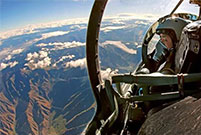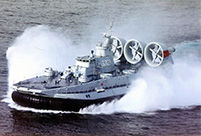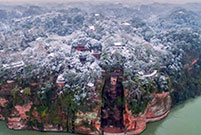

Scientists in northeast Germany have successfully completed their latest experiment on the road to harnessing nuclear fusion power.
Researchers at the Max Planck Institute injected a tiny amount of hydrogen and heated it until it became plasma, effectively mimicking conditions inside the sun.
It's part of a worldwide effort to harness nuclear fusion, a process in which atoms join at extremely high temperatures and release large amounts of energy.
Researchers at the Max Planck Institute have injected a tiny amount of hydrogen and heated it until it became plasma (pictured), effectively mimicking conditions inside the sun. It's part of a worldwide effort to harness nuclear fusion, a process in which atoms join at high temperatures and release large amounts of energy
Advocates acknowledge that the technology is likely many decades away, but argue that - once achieved - it could replace fossil fuels and conventional nuclear fission reactors.
Construction has already begun in southern France on ITER, a huge international research reactor that uses a strong electric current to trap plasma inside a doughnut-shaped device long enough for fusion to take place.
The device, known as a tokamak, was conceived by Soviet physicists in the 1950s and is considered fairly easy to build, but extremely difficult to operate.
The team in Greifswald, a port city on Germany's Baltic coast, is focused on a rival technology invented by the American physicist Lyman Spitzer in 1950.
Called a stellarator, the device has the same doughnut shape as a tokamak but uses a complicated system of magnetic coils instead of a current to achieve the same result.
The Greifswald device should be able to keep plasma in place for much longer than a tokamak, said Thomas Klinger, who heads the project.
'The stellarator is much calmer,' he said in a telephone interview.
'It's far harder to build, but easier to operate.'
Known as the Wendelstein 7-X stellarator, or W7-X, the device was first fired up in December using helium, which is easier to heat.
Helium also has the advantage of 'cleaning' any minute dirt particles left behind during the construction of the device.
David Anderson, a professor of physics at the University of Wisconsin who isn't involved in the project, said the project in Greifswald looks promising so far.
'The impressive results obtained in the startup of the machine were remarkable,' he said in an email. This is usually a difficult and arduous process.
 |
 Have you ever taken these beautiful subways in China?
Have you ever taken these beautiful subways in China? Chinese beauties, foreign models meet in Chengdu
Chinese beauties, foreign models meet in Chengdu Awesome! Aerial pictures taken on J-11 fighter
Awesome! Aerial pictures taken on J-11 fighter A foreign girl explains what China should be proud of
A foreign girl explains what China should be proud of Chinese navy's air-cushioned landing craft in pictures
Chinese navy's air-cushioned landing craft in pictures Chinese pole dancing master opens class in Tianjin
Chinese pole dancing master opens class in Tianjin Splendid Sichuan after snow
Splendid Sichuan after snow College girl of Vancouver crowned Miss Chinese Int'l 2016
College girl of Vancouver crowned Miss Chinese Int'l 2016 Pentagonal Mart becomes the largest vacant building in Shanghai
Pentagonal Mart becomes the largest vacant building in Shanghai Top 20 hottest women in the world in 2014
Top 20 hottest women in the world in 2014 Top 10 hardest languages to learn
Top 10 hardest languages to learn 10 Chinese female stars with most beautiful faces
10 Chinese female stars with most beautiful faces China’s Top 10 Unique Bridges, Highways and Roads
China’s Top 10 Unique Bridges, Highways and Roads Buying nianhuo!
Buying nianhuo! What Chinese try to sneak on flights (and how)
What Chinese try to sneak on flights (and how) Northeast authorities vow they will work to eradicate GM grains
Northeast authorities vow they will work to eradicate GM grains China’s richest village manages to transition away from old industries
China’s richest village manages to transition away from old industriesDay|Week